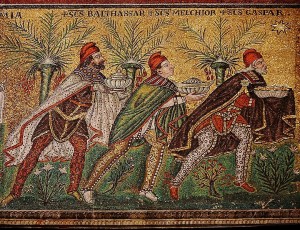If you are planning a visit to Alicante or Murcia this January here are a few of the fiestas you can see around the region.
The Three Kings Parade – Teulada and Moraira

On the fifth of January the Three Kings Festival (Los Reyes Magos) is celebrated throughout Spain. Here in Alicante you might like to experience the celebrations in Teulada and Moraira. In Moraira, the Kings arrive on Ampolla beach at around 5pm. Scenes from the nativity story are then acted out before a parade to the Nuestra Señora de los Desamparados church. The parade includes music, costumes and floats. Meanwhile, in Teualada the three kings arrive at around 6pm via Avenida de Europa before a parade to a stable set up in the Town Hall plaza, where the actors will perform the nativity story. A favourite tradition amongst the children of both towns is the giving away of gifts at the end of the evening to kids in the crowd.
Romeria Virgen del Mar, Pilgrimage of Our Lady of the Sea – Almeria

The Pilgrimage of Our Lady of the Sea takes place in Almeria every year on the second Sunday of January. Legend has it that the patron saint of the sea appeared on the beach of Torregarcia over 500 years ago and was spotted by a coastal lookout. Today, a chapel has been built on the site of the reported sighting and every year a procession carries a model of the Virgin from its home in the town centre to the chapel on the coast. Once inside the chapel, a Mass is performed for the gathered pilgrims before a large feast.
Fiestas Patronales – San Fulgencio
In the second half of January, the town of San Fulgencio celebrates its patron saints: San Anton and San Fulgencio. A number of events are held throughout the festival, including fireworks displays, processions, band parades and masses.
Jesuset del Miracle, Procession of the Miraculous Baby Jesus – Alcoy
Every year on the 31st of January, the people of Alcoy hold a procession that marks the anniversary of a miracle that occurred in the city. In 1568 a Frenchman living in Alocy, Joan Prats, stole various items from his local church and buried them in a stable. Upon the discovery of the theft a reward was offered for the safe return of the items and the townspeople conducted a search of the area. It is then said that a statue of the baby Jesus in a neighbour’s house moved and pointed out the location of the stolen items, leading to Prats’ arrest and execution. As well as a solemn religious procession through the streets, locals also feast and dance the dance of ‘Paloteig’.
 Sweden
Sweden

